Rick Wayne's Blog, page 43
July 2, 2019
Print Cover Reveal!
I am hurtling toward the deadline like poo at a fan. Pre-order now. Available in print and digital on the 19th!
[image error]
(Feature) Milking Your Eyeballs of Venom
I often find myself in the position of being an apologist for Japan. I don’t want to be, but a conjuncture of factors often compels it. For one, after so much time there, I have a basic understanding of the culture, which comparatively few people in the West do. For another, the media does an extremely poor job of filling the vacuum.
What they are chiefly good at is getting your attention and selling it to advertisers. Whether they aim for that maliciously or simply do it by trade probably depends on the publisher.
Don’t believe me? There was an article making the rounds a few years ago that accused the Japanese of racism because one of their larger companies asked a Western minority employee to dye her hair.
Now, the Japanese can certainly be very racist. But in that, they’re hardly unique. More to the point, this was not an example of it. Quite the opposite, in fact.
Dress codes are widespread in Japan. It differentially affects women, but men are hardly exempt. (There is no misery quite like wearing a full black business suit on a packed subway train in the humid heart of a Tokyo summer.)
Japanese companies typically require ALL their employees dye their hair. My fiancee, a Japanese native living in Tokyo and working for JAL, has to dye her hair every summer, when the sun lightens it.
In requiring their Western-born employee to do the same, the company in question was specifically treating her like any other member of the team, not singling her out. They had welcomed her, effectively, and asked that she follow the same rules as everyone else.
That is not racism. It is literally the exact opposite of racism.
But that’s not how it was portrayed in the West, where every major outlet that carried the story went with some form of the clickbait narrative: Western Woman Singled Out by Evil Japanese Corporation.
The strong form makes the accusation. The weak form simply “reports that an accusation has been made,” but the effect is the same.
Now the story is Japan’s withdrawal from the International Whaling Commission (IWC).
Don’t get me wrong. There’s nothing positive about this development. While not exactly catastrophic for the whales (Japan’s influence is largely confined to a single zone in the Pacific), it’s certainly not good.
I should also say, in the interests of disclosure, that I am personally opposed to whaling of all kinds, and that I am generally left of center on most issues.
That being said, the Japanese are not slavishly rolling their hands as they slurp over piles of whale meat.
Did you know, for example, that Canada kills more whales than anyone? More than twice as many as the Japanese, in fact. Greenland is second, followed by the Faroe Islands, both territories of Denmark. Norway is third. These are all liberal Western democracies.
[image error]
So why pick on the Japanese?
The easy answer is good old fashioned racism, and that may play into it, but I suspect it has more to do with simple hypocrisy — my good friend the Fundamental Attribution Error.
To start, the IWC was not established to end whaling, although many people want to see it used that way. It was created in 1946 to “provide for the proper conservation of whale stocks and thus make possible the orderly development of the whaling industry.”
I repeat: the purpose of the organization is to maintain stocks such that they can be sustainably harvested.
That personally makes me very uneasy, but we don’t get to unilaterally change the terms of an international treaty just because we don’t like them anymore.
The Japanese (along with Iceland and Norway) are asking a legitimate question: given the IWC’s mandate, at what point will the ban on commercial whaling be lifted?
The answer has been “Never!” which isn’t exactly legal or fair.
Don’t have to take my word for it. Please read this op-ed by an Australian delegate and former chair of the IWC:
One of the issues, it seems to me, is the so-called “aboriginal exemption,” which is ultimately the reason no one talks about Canada or Denmark or the United States. Whaling in those countries is labeled “aboriginal” rather than “commercial.”
In the years 2010-2014, Canada’s first nations killed an average of 2.5 whales per day, every single day of the year. The phrase “subsistence hunting” doesn’t mean that if Canada’s natives didn’t kill every single one of those 4,510 whales, that some Inuit somewhere would’ve starved. It means that whaling supports a basic local economy in areas that would likely collapse without it. And if you think they’re hunting with canoes and spears, you have another thing coming.
In other words, it’s absolutely “commercial,” even when it’s labeled “aboriginal.”
Yes, there is a subtle difference. I get that. My point is that we shouldn’t get hung up on labels, which is a sign of small thinking. If killing whales and selling the meat is wrong and the Japanese are bad for doing it, what difference does a label make?
As the former chair of the IWC points out:
“I witnessed Japan produce volumes of detailed studies on the cultural significance of whales and whaling to key settlements mainly in the north — all contemptuously dismissed by ‘like-minded’ [Western] countries, to the palpable disappointment of the Japanese delegation. It was simple hubris.”
The Japanese are not a uniform homogeneous entity. They also have isolated, economically troubled northern communities that could significantly benefit from a resumption of traditional whaling, same as the West.
Japan also has an aboriginal minority, the Ainu. But even taking them out of the equation, the Japanese themselves have occupied their archipelago, whaling, at least since the start of the Jomon period, circa 14,000 BCE.
How is that not “aboriginal?”
The difference, of course, is that the Japanese are not a source of Western liberal guilt.
But if whaling is unethical — and I believe it is (although I don’t want to argue about it, certainly not here) — then shouldn’t the West, as the largest killer of whales, take steps to address their own internal racial and political troubles? How do those troubles justify a double-standard for non-Western countries that had nothing to do with them?
Despite media coverage to the contrary, the Japanese have not “gone rogue.” They have spent the last 30 years trying to work within the system created by the treaty they signed, whose aims have since been surreptitiously and unilaterally co-opted by the West, deliberately contravening the terms of that treaty.
The article above and others mention “political posturing” within Japan as another cause, and while that’s not wrong, it’s terribly misleading. That posturing has always been there, to a greater or lesser degree. You can’t blame a change on a consistent factor.
And if it has increased lately, we have to ask ourselves what has changed such that now there’s an internal audience for that posturing, where there wasn’t before?
I won’t speculate. I’ll leave that to the media. But whatever the reason, the Japanese are clearly tired of being treated as second-class global citizens, of having their arguments met, in the words of the former chairman: “by rote chanting in the West of ‘we don’t like killing whales’ and peddling of the usual emotive nonsense from NGOs.”
It’s possible the Japanese withdrawal is part of a longer strategy. They are, after all, not stupid. I could see them rejoining the IWC, under certain conditions, in the run-up to the 2020 Tokyo Olympics, when the eyes of the world will be upon them. (I’m not saying that will be the case, merely that it’s possible.)
In the meantime, the West, whose aboriginal populations are the single largest killer of whales by a factor of 10, might start the healing process by looking in the mirror. If the long-term goal is an end to whaling, then the biggest immediate impact can be had within sovereign borders, without recourse to the IWC — or Japan.
Of course, all that is messy and complicated, as the real world often is, and doesn’t give Western readers a clear villain to shake their fists at. The Japanese are hardly innocent, but it seems to me there is plenty of blame to go around.
Regardless, responsible coverage of the issue would seem to require some of that complexity, which is conspicuously absent from every article I read. Whether that’s because the reporters and their editors didn’t bother or didn’t care — that is, whether they’re merely incompetent or deliberately misleading — I’ll let you decide.
July 1, 2019
(Art) The Curious Dreamworlds of Bill Mayer
[image error]
Artist Bill Mayer has created book covers and illustrated classic stories, including Orwell’s Animal Farm. His fine art blends the eerie and whimsical into dreamlike alternate realities where plants and animals make up aristocratic high society and yeoman robots plow the earth by hand.



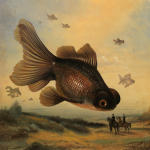

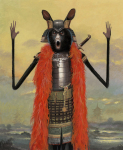
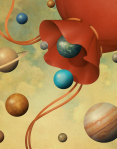








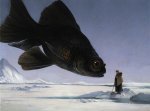

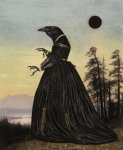

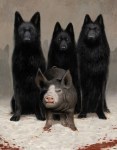

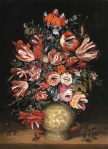
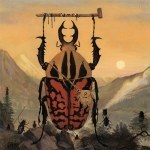
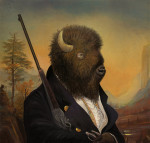
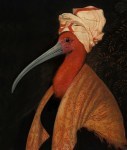

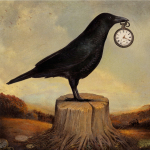



June 30, 2019
June 28, 2019
June 26, 2019
(Fiction) Not too late for what?
“I haven’t actually met Dr. More,” the young clerk behind the desk explained apologetically.
“Isn’t this his office?”
“One of them,” he nodded. “He sees patients here on Tuesdays and Thursdays.”
“Looks like I’m in luck.”
“But he hasn’t been here since I started a few weeks ago.”
“That is his name on the door, right? Next to Doctors Caldwell and Burton?”
“Yes,” he said, unsure if he was being trapped into admitting something.
“Who’s your manager?”
“I’m sorry, is this a police matter?”
“Yes, actually.” It was partly true. “It’s important I speak with Dr. More as soon as possible. What’s his name?”
“Well, Ms. Singleton runs the office. She just stepped out, but—”
“I’ll wait,” I said with a polite smile.
The two other patients in the narrow room glanced up at me as I sat and went back to their screens. I pulled Bea Goswick’s file from my shoulder bag and opened it to the sticky note I’d been using to hold my place. The file was a mess. It hadn’t simply been set on fire. It had been dumped into a pile and drizzled with lighter fluid. I could still smell it. By the looks of things, she’d changed her mind pretty quickly and stomped on the burning pile. When that didn’t work, she doused it with water. Anything that wasn’t charred was warped and faded. And it was all out of order. She hadn’t reorganized it. She’d simply stuffed everything back however it fell. What was left read like conspiracy fodder, a collection of unrelated deaths from around the world covering a span of 30 or more years: a Jewish mystic in Denmark, an aid worker in Ethiopia, a Shinto priestess, a 13-year-old Tibetan Lama. A lot of it was so damaged as to be illegible. Any normal person would’ve drawn one conclusion only: that its collector was emotionally unhinged. The problem was, I wasn’t getting anything from it either.
I flipped through the next few warped photos and unfolded what was left of an article clipped from the Post. I couldn’t read most of the text, but the date and part of the title were clear. I took out my phone and searched the website. I sat up when I saw the name Alonso White, the man whose mural memorial the chef had visited a few days earlier. What did it mean?
I heard a door shut in the back. When I looked up, the clerk was gone. A moment later, a stern-faced older woman in platform heels walked toward me from the hall. Her plastic name tag said SINGLETON.
“Dr. More isn’t here,” she said. “You can leave a message with his service.”
“I’ve been doing that.” I stood and closed the file. “I’ve left numerous messages over the last several weeks. He hasn’t gotten back to me.”
“Then give your message to me,” she said. “I will make sure he gets it.”
She was around 60 and wore no makeup. Her hair was parted in the middle and fell below her ears. There were three thin, parallel scars on the side of her face near her right eye.
“I can’t wait any longer. I need to speak to him. Today.”
“He’s not here,” she stressed.
I motioned to the narrow waiting room, whose handful of occupants were watching me out of the corners of their eyes like school kids afraid to be called on in class. “So none of these patients are his?”
“Dr. Caldwell has taken Dr. More’s patients while he’s on sabbatical.”
“That’s funny. He never mentioned a sabbatical. Seems to me a professional health care provider might let his patients know if he were planning an extended absence.”
“All his patients were made aware. Perhaps you weren’t listening.”
The implication was clear.
“I’m sure I would’ve remembered.”
“Then you’ll have to take that up with Dr. More when he gets back.”
“Is he coming back?”
“Your questions have been patiently answered, Detective. This is harassment.” She stepped to the desk and picked up the receiver to the phone like she was going to dial 911. “Please leave.”
“If he’s not here, then you won’t mind me looking in his office.”
She’d moved out of my way and left a clear path to the back, but she dropped the phone and stepped back in front of me as soon as I moved. “This is private property. You can’t just walk in.” She pointed to young clerk, who was staring at the confrontation in disbelief. “Christopher, please dial the police and tell them we’re being harassed.”
The young man picked up the phone from where it rested but hesitated to dial.
“You keep using that word,” I said to my adversary. “Is it supposed to scare me? What’s wrong with a quick peek? If you have nothing to hide.”
She crossed her arms and planted herself.
I turned to the younger colleague. “Well? What are you waiting for? Make the call.”
The elder nurse sighed and turned for the door to Dr. More’s office. It was already shut. She pulled a mass of keys from her waist and locked it. I caught the sign on the next door down. It said DR. ALAN CALDWELL, same last name as the couple who moved into More’s house, according to the neighbor.
I walked forward and opened it over the nurse’s objection. There was a nice glass-topped desk, some chairs, two framed degrees with giant matte borders, a sofa to one side, a credenza at the back. There were tribal masks on the wall by the door, facing the desk, and when I turned my head to look, I caught a glimpse of a wasp. It crawled through the eye of a faded Balinese mask and disappeared, like it was hiding. The nurse pushed me back and shut the door. My temple felt like it was going to explode. I didn’t even want to touch it. All I could do was wince.
She shouted something. I couldn’t hear it, but I saw her lips move. I saw her brow crease in anger. And then I saw her breath, like a bright cloud.
“Shit.”
I looked around the waiting room at the shocked faces, staring at me in confusion and fear. I looked at the pair of uniformed security guards who walked, as if in slow motion, through the office door. I couldn’t hear any of them. The whole room was silent. But their breath puffed like steam, as if they were trudging through the snow in the dead of winter. It billowed from their nostrils with every breath.
I started shivering. The pain at my temple was so intense, I thought my skull had cracked. Then I saw my own breath.
“No . . .”
I could feel it coming. I could feel it out there. Waiting.
The dire hunter.
I pulled free of the first security guard’s grasp and stormed through the door, room still shrouded in silence. I skipped the elevator and went right to the stairs. I made it two flights before I was shivering so bad that I couldn’t walk. It was like I’d been sleeping in snow. I was chilled to the core. I fell back against the block wall and slid down until I was sitting with my back to the corner of the landing. I was shaking. My teeth were chattering. I couldn’t hear it, but I could feel them rattling against each other.
I stared ahead at a tree line. White-barked birch trees with bands of black stood in an irregular row, marking the boundary of a forest. The interior was dark. It was nighttime. The only light came from the full moon reflected on the snow. I was squatting in a clearing, staring at the silent forest. Everything was still. There wasn’t even a hint of a breeze. I squinted into the darkness, between the branches. It was in there. I knew it. I couldn’t see anything, but I knew it was in there, looking back at me.
The wolf with three eyes.
I knew also that it had been stalking me through the still forest. I couldn’t see it. But I knew. I caught glimpses of its footprints in the snow from where it had walked out of the clearing and into the forest, which was still lush and green, despite being under a blanket of white. Here it was seemingly the dead of winter, yet none of the leaves on the trees have fallen. In fact, they were as bright and full as spring. It was beautiful, but also incongruous and disturbing. I think it meant it’s not too late.
But not too late for what?
excerpt from “To the White of the Bone,” the third mystery in my forthcoming five-course conundrum, FEAT OF SHADOWS. Part 1 releases next month!
June 25, 2019
(Art) The Brilliant Chromatic Space of Peter Elson
[image error]
Peter Elson (1947 – 1998) was an English science fiction illustrator whose work appeared on the covers of numerous science fiction paperback novels, as well as in the Terran Trade Authority series of illustrated books. Elson, whose illustrations often placed detailed, brightly liveried spacecraft against vividly colored backgrounds, influenced an entire generation of science fiction illustrators and concept artists.












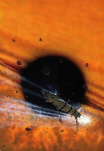







The Multitude
“If there be any among those common objects of hatred which I can safely say I doe condemn and laugh at, it is that great enemy of reason, vertue and religion, the multitude, that numerous piece of monstrosity, which taken asunder seeme men, and the reasonable creatures of God; but confused together, make but one great beast, & a monstrosity more prodigious than Hydra; it is no breach of Charity to call these fooles.”
― Thomas Browne, Religio Medici & Urne-Buriall
It’s not that he’s wrong. It’s that no one thinks themselves a part, just as no raindrop feels responsible for the flood, no snowflake, the avalanche. We’re never frustrated at ourselves for our contribution to the traffic we’re stuck in.
19th century man in turban holds a hunting falcon
Paja Jo...
Paja Jovanović – The Falconer
June 24, 2019
The Multitude
― Thomas Browne, Religio Medici & Urne-Buriall
It’s not that he’s wrong. It’s that no one thinks themselves a part, just as no raindrop feels responsible for the flood, no snowflake, the avalanche. We’re never frustrated at ourselves for our contribution to the traffic we’re stuck in.



